Key takeaways:
- Personalized experiences, including tailored content and interactive elements, significantly enhance guest engagement and foster emotional connections.
- Mother’s Day websites play a crucial role in building community and celebrating familial bonds through shared stories, traditions, and local artisan support.
- Key elements of successful websites include intuitive navigation, compelling emotional content, and appealing visual design to retain user interest.
- Effective engagement strategies include gamification, user-generated content, and real-time interactions to create a vibrant and supportive online atmosphere.
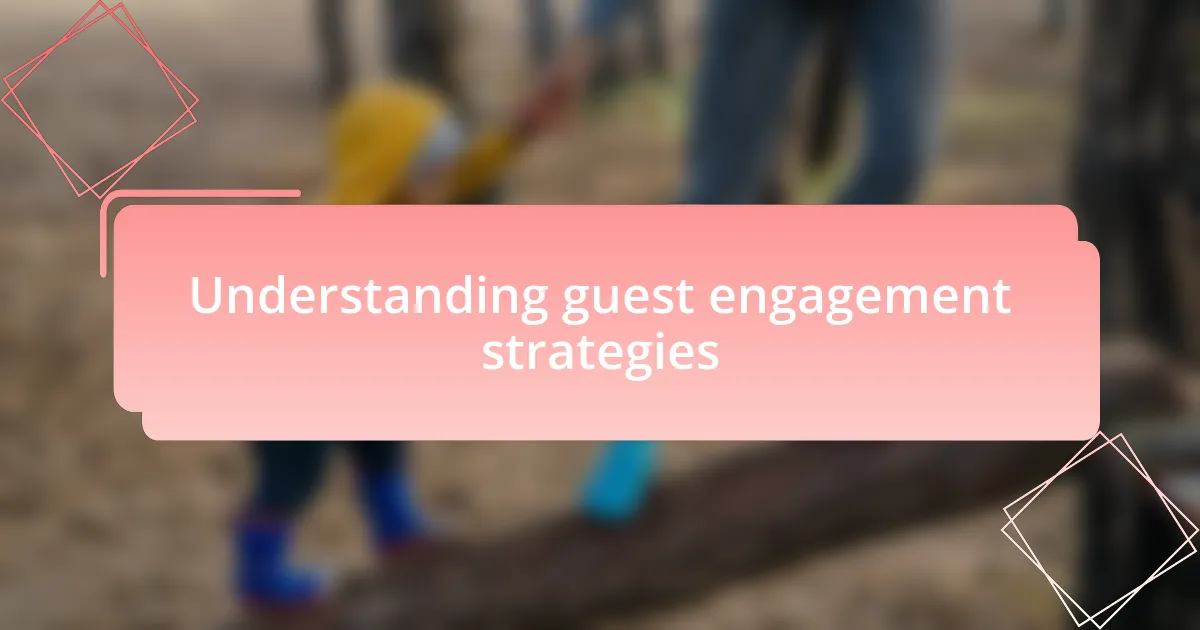
Understanding guest engagement strategies
Understanding guest engagement strategies requires an insightful approach to connecting with your audience. For instance, I once focused on creating personalized experiences through tailored content, which made visitors feel valued and more likely to return. Have you ever noticed how a simple, heartfelt message can make all the difference in someone’s day?
In my experience, interactive elements like polls and quizzes can significantly boost engagement. I remember implementing a fun Mother’s Day quiz on my website; not only did it entertain visitors, but it also provided insights into their preferences. This interactive approach turned casual visitors into active participants, allowing them to form a deeper connection with our content.
It’s essential to consider the emotional journey of your guests. One time, I shared a personal story about my own mother and the lessons she taught me. The response was overwhelming; readers felt compelled to share their own stories in return. This exchange fostered a sense of community, proving how effectively shared emotions can enhance engagement. Have you thought about what personal experiences you can share to resonate with your audience?
Importance of Mother’s Day websites
Mother’s Day websites serve as vital platforms for honoring and celebrating the unique contributions of mothers. I remember a time when I stumbled upon a beautifully designed site dedicated to Mother’s Day tributes. The way it brought together heartfelt messages and shared memories made me reflect on the importance of such spaces for collective appreciation. Have you ever thought about how a dedicated website can channel emotions and strengthen familial bonds during such a significant occasion?
These websites not only offer gift ideas and suggestions for activities, but they also create a sense of community. I once participated in an online Mother’s Day event where users could share their favorite recipes passed down through generations. This experience highlighted how sharing traditions can connect people, even virtually, fostering a supportive network of parents and children alike. Isn’t it fascinating how sharing these moments can make us feel closer, despite the miles that may be between us?
Moreover, Mother’s Day websites are great tools for businesses to demonstrate their understanding of customers’ sentiments. I once collaborated on a project that emphasized local artisans creating custom gifts, and it was rewarding to see the focus on quality and personal touch resonate with visitors. Have you noticed how highlighting local talent can change the narrative around gift-giving? By supporting these initiatives, we not only engage visitors but also promote meaningful connections within our communities.

Key elements of successful websites
Successful websites share common elements that contribute to their effectiveness and user engagement. One crucial aspect is intuitive navigation. I remember visiting a site where I could easily find gift ideas without feeling overwhelmed. It was refreshing, and I found myself exploring more because the layout guided me seamlessly through various categories, making the experience enjoyable. Have you ever felt frustrated on a website because you couldn’t find what you were looking for?
Another key element is compelling content that resonates emotionally with visitors. I once came across a Mother’s Day website that featured not just products, but heartfelt stories from users about their mothers. This storytelling approach drew me in, making me reflect on my own experiences and needs. It sparked a connection that went beyond the transactional, reminding me of the reason we celebrate this day in the first place. Isn’t it amazing how words can evoke such strong feelings and memories?
Lastly, visual appeal cannot be overlooked. The aesthetics of a website play a significant role in drawing people in. I fondly recall a site that perfectly blended color palettes with engaging images, making each section feel like an invitation to linger longer. This visual storytelling can captivate visitors and keep them returning. Have you noticed how a beautiful layout can enhance your mood and encourage exploration?
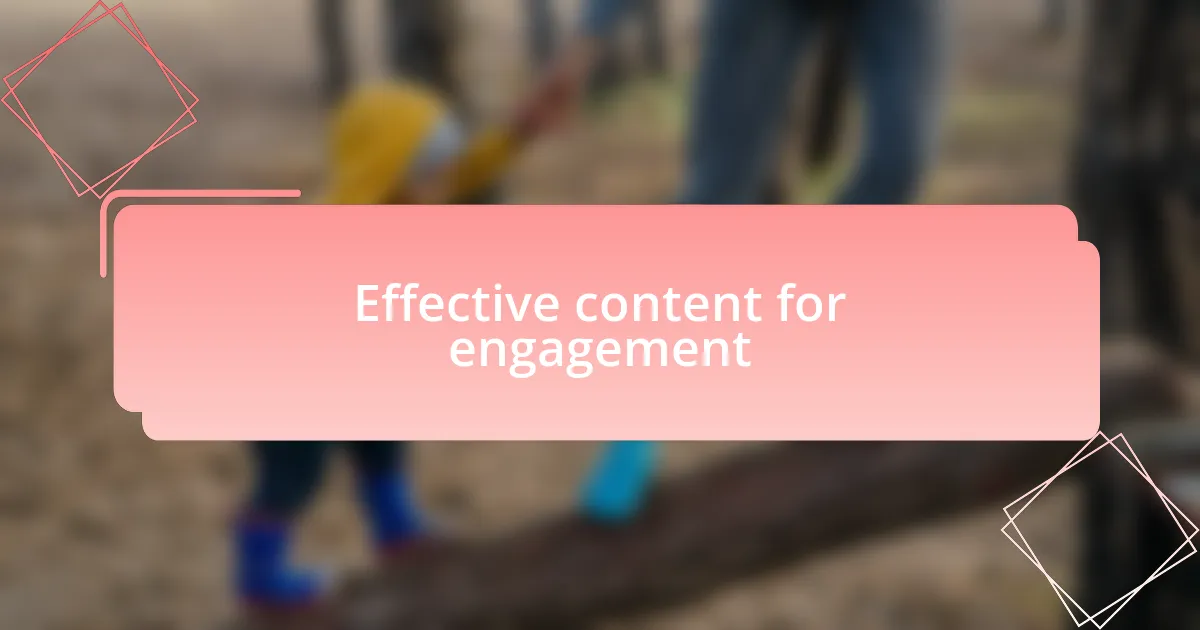
Effective content for engagement
Engaging content is about more than just information; it’s about creating an emotional connection. I remember stumbling upon a Mother’s Day website that featured a section where people shared their favorite memories with their moms. Reading those heartfelt anecdotes made me smile and even tear up a bit, as it brought back cherished memories of my own mother. Have you ever found yourself getting lost in someone else’s story, realizing just how similar our experiences can be?
Another effective strategy is offering practical tips and ideas that resonate with visitors’ needs. On one memorable site, I discovered a myriad of creative ways to celebrate Mother’s Day, from DIY gift ideas to unique experiences I could share with my mom. This approach didn’t just help me think outside the box; it made me feel empowered to do something truly special. Isn’t it invigorating when information not only informs but inspires action?
Lastly, I find that interactive content significantly boosts engagement. Once, I visited a Mother’s Day website that had a quiz to determine the perfect gift based on my mom’s personality. It was fun and engaging, turning the rather mundane task of gift shopping into a delightful experience. I ended up spending more time on the site, enjoying the process. Have you ever engaged with content that transformed your mindset from chore to enjoyment?
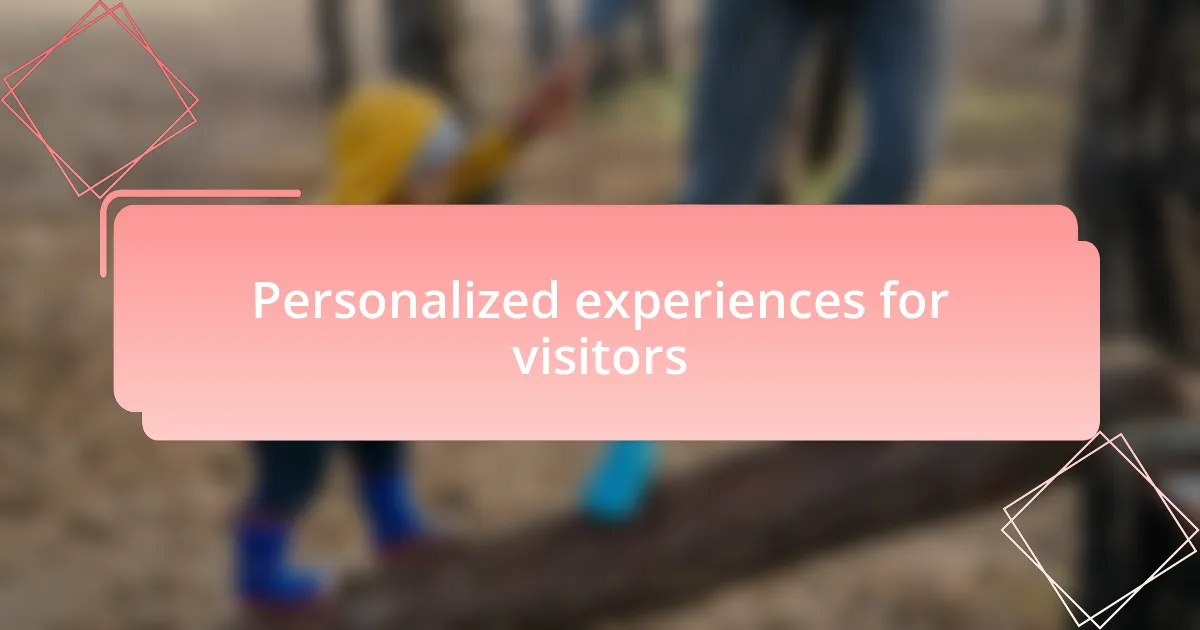
Personalized experiences for visitors
Personalizing experiences for website visitors can make all the difference. I once visited a site that greeted me with a warm, customized message, asking about my relationship with my mom and suggesting tailored gift ideas based on my answers. It felt like the website really understood me, turning a simple visit into a personal journey. Have you ever felt a website reach out to you as if it knows your story?
I also appreciate when websites offer interactive elements like personalized cards or virtual gifts. There was a Mother’s Day site that let me customize an e-card with my own photos and messages. As I crafted that card, I felt a genuine connection to the experience. It wasn’t just about sending a card; it was about creating something special for my mom that she would treasure. How often do we get the chance to express our feelings in such a meaningful way?
Additionally, using visitor data to offer curated content can elevate the browsing experience. One site I explored featured recommendations based on my previous visits, which made navigating to engaging content feel effortless. It’s fascinating how a little thoughtful personalization can enhance what could otherwise be a generic browsing experience. Have you ever wondered how much more enjoyable your online experience could be if it felt more tailored to you?
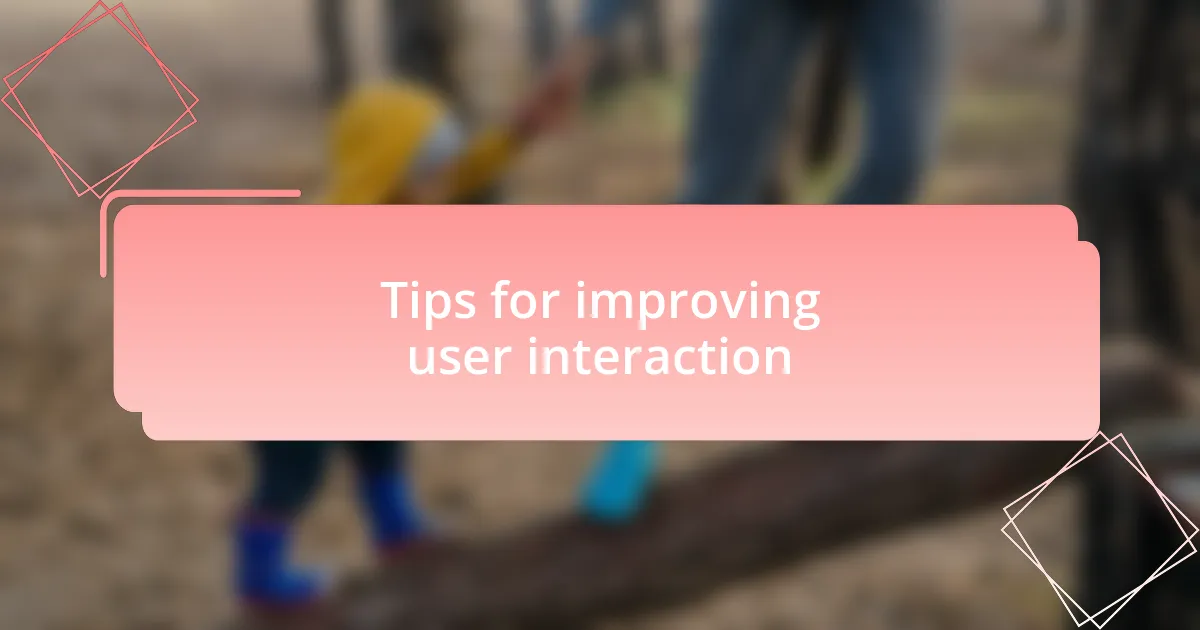
Tips for improving user interaction
Incorporating gamification elements can significantly boost user interaction on Mother’s Day websites. I once participated in a site that had a fun quiz to determine the best gift for my mom. The process was engaging, and it felt like a game, which made exploring gift ideas not only enjoyable but immersive. Have you ever found yourself more invested in a decision when it feels like a playful challenge?
Encouraging user-generated content can also create a vibrant community atmosphere. I recall a website that invited visitors to share their own Mother’s Day stories and photos. Reading others’ heartfelt stories added a personal touch to the site, and I felt a sense of belonging. Isn’t it amazing how sharing our experiences can connect us with others who have similar sentiments?
Finally, real-time interactions through live chats or consultations elevate user engagement. I had a delightful experience when I utilized a chat feature for gift advice on a Mother’s Day site. The prompt responses made me feel valued and understood, transforming my browsing into a meaningful conversation. How often do we wish for that level of immediate support when seeking the perfect gift?
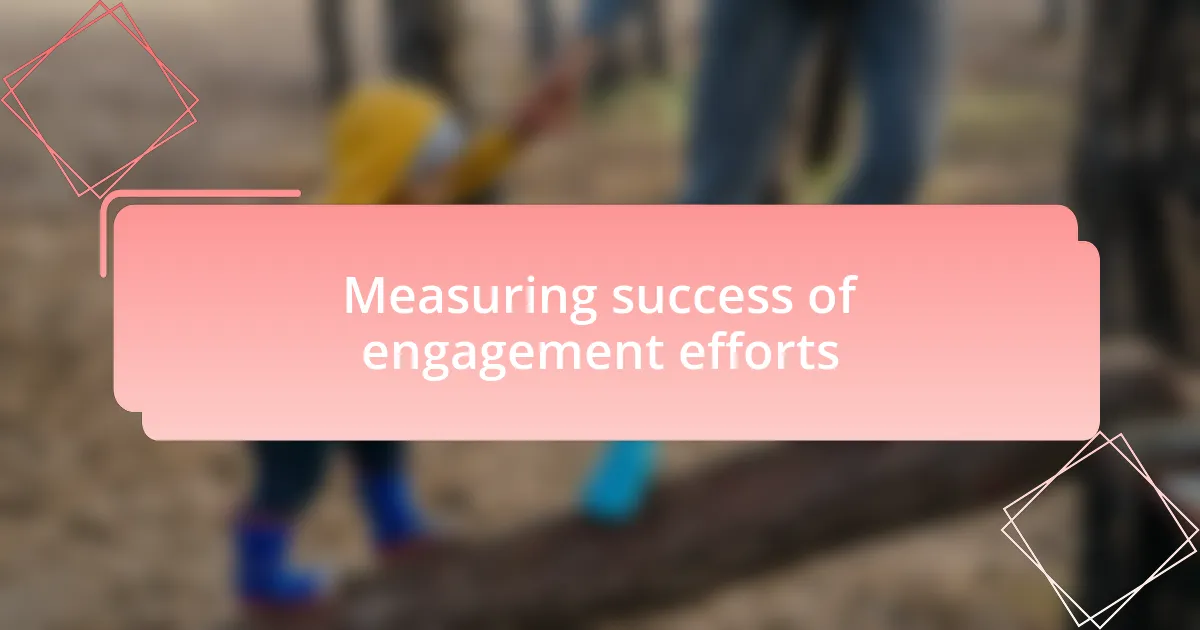
Measuring success of engagement efforts
When it comes to measuring the success of engagement efforts, tracking metrics such as time spent on page and bounce rates can offer valuable insights. I remember analyzing a Mother’s Day site where users spent an average of five minutes on interactive gift guides. That duration suggested they were not only browsing but genuinely exploring options. Have you ever wondered why certain content keeps you hooked longer than others?
Another effective method is monitoring user feedback through surveys or comment sections. I once filled out a quick survey after navigating a thoughtful Mother’s Day campaign, and the feedback loop made me feel my opinions mattered. Isn’t it refreshing when companies actively seek our input and genuinely respond to it?
Lastly, conversion rates serve as a definitive gauge of engagement success. I often reflect on a Mother’s Day website that saw a spike in purchases after introducing personalized recommendations. When users feel that their preferences are understood, it’s like striking gold in user experience. Don’t you think a tailored approach can turn casual visitors into loyal customers?